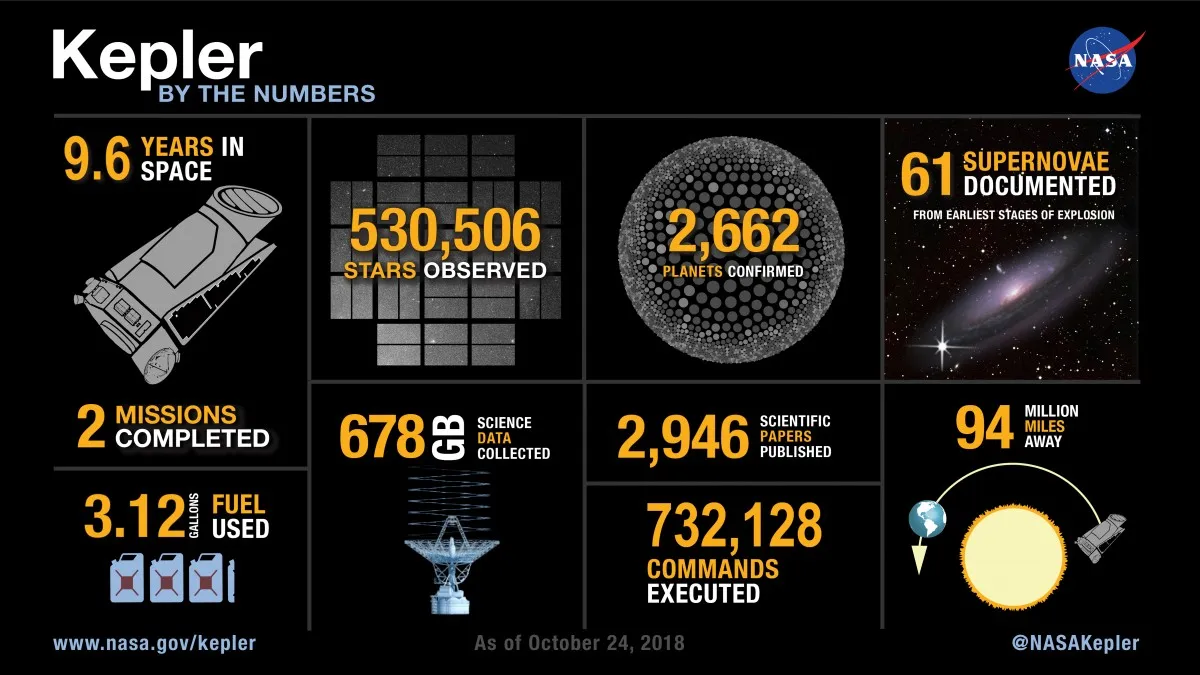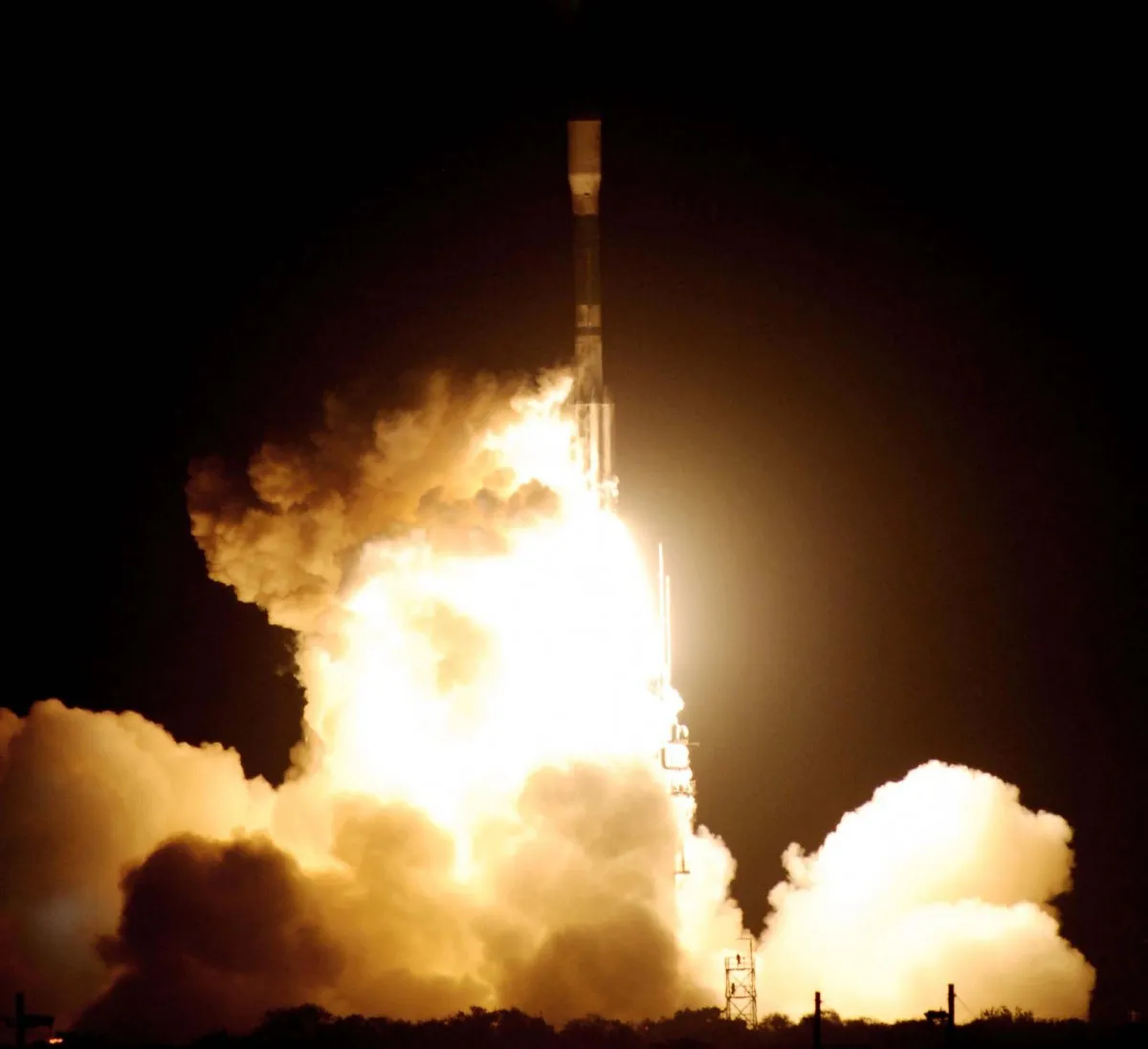The Kepler space telescope spent the best part of a decade looking for Earth-like exoplanets.The telescope has now retired and it's safe to say the mission has changed our view of the Universe forever, revealing there are more planets than the stars we see in the night sky.
In 2009, BBC Sky at Night Magazinespoke to NASA scientist Bill Borucki, then principal investigator of the Kepler space telescope.
The mission discovered super Earth-like exoplanets, and hot gas giants larger than Jupiter that orbit incredibly close to their host stars.
In fact, rather than confirm our own Solar System as a commonplace configuration in the cosmos, Kepler actually revealed how unique it really is.
What's left of the Kepler mission is a huge database of over 2,500 exoplanets, ripe for closer observation by the next generation of space telescopes.

"Kepler is a space telescope that will look for small planets like Earth to find out how frequent they are around other stars.
I’ve steered the project since I first published the idea in 1984 and first proposed for a launch in 1992.
We proposed every two years until we got the mission accepted in 2000, and it launched in March 2009.
What we’ve done so far is we’ve taken some of our calibration data during commissioning and shown that Kepler can find Earth-sized planets.
That’s the first proof we have that we can do that.
We’d like to find rocky planets that have densities in like the Earth does, planets that might actually be habitable
We looked at a star that’s already known to have a planet, a star called HAP-P-7, and found that we can see this particular planet’s transits very, very clearly.
This is when the planet goes in front of its star and so the star’s brightness changes slightly.
But we didn’t just see that, we also saw another little dip in intensity, and that little dip is when the planet goes behind its star and the light from the planet is cut off.
That little dip is about the size of a dip in light that you would find from an Earth-sized planet and it means that some of the light we’re seeing is actually coming from the planet itself.
This is the first discovery of light from that planet and it tells us that the planet must be extremely hot – about 2,700K (2,427ºC) – so hot that it glows almost like an ember from a campfire.
It’s a wonderful discovery and a nice confirmation of the ability of Kepler to get the job done.

Kepler is a photometer, an instrument for measuring the intensity of light from stars.
It’s very much like a camcorder, taking pictures of the same set of stars time and time again.
Every time it takes a picture we look to see if a star’s brightness has changed, but we can’t tell whether the star is red or blue or green, we get no colour information.
It’s about 600 times more sensitive than the human eye, which can see stars down to the sixth magnitude.
We’re operating down to 14thmagnitude, eight magnitudes fainter.
The data that’s coming back is as sensitive as it ever will be, but we need to do a bit more work on our interpretation of it.
Right now, it’s easy for us to find the Jupiter- and the Neptune-sized planets, but our highest interest is Earth-sized planets, which are very hard to find and we don’t believe we’ll have the precision for at least a couple of years.
We’re pretty confident we’ll find something because of the sensitivity and because of the huge area of sky that Kepler is searching.
Most telescopes look at a really tiny portion of the sky: the Hubble Space Telescope field of view is like holding a grain of sand out at arms length –just a really tiny piece.
Ours is 100 square degrees, 10,000 times as large as Hubble’s.

We’ve also spent five years and several million dollars surveying the stars in Kepler’s field of view with the 1.5m Tillinghast Telescope at the Fred Whipple Obseratory in Arizona.
This identified something like 12 million stars in the area of sky, of which 4.5 million actually sit on our detectors.
We’ve looked at all these stars and out of the 4.5 million, 150,000 look like they’re interesting.
We know these are Sun-like stars and not giants that have eaten their planets.
While Kepler can tell us the size of a planet and how long it takes to go round its star, it can’t tell us a mass of the planet, how heavy it is.
For that we go to ground-based telescopes like the 10m Keck Telescope in Hawaii, the 9.3m Hobby-Eberley Telescope in Texas, or the 3.5m WIYN Telescope on Kitt Peak in Arizona.
If we tell them what star to look at and when to look, we can tell how massive it is.
And with the size and the mass we can tell the density, and that’s important because some planets have an average density greater than that of lead while others would float on water.
Now we’d like to find rocky planets that have densities in like the Earth does, planets that might actually be habitable.

No one has ever done anything like the Kepler mission before, and there was a whole series of challenges that we faced before getting the mission accepted.
When we first proposed they said "there are no such detectors," and we had to prove that the detectors could work.
And then they said "but nobody has ever done automatic photometry on 150,000 stars like you’re talking about," so we had to build an automated telescope and the software to do this.
And then they said "nobody has ever shown the kind of precision that’s required with an instrument in space," so we built a lab system to prove it would have the precision when in orbit.
When the mission was accepted, it was to launch in 2004.
I expected to be much further ahead than we are now, already finding new Earth-like planets and looking at their atmospheres.
We’re behind schedule, but often ones dreams are a little bit further out than one would hope."
